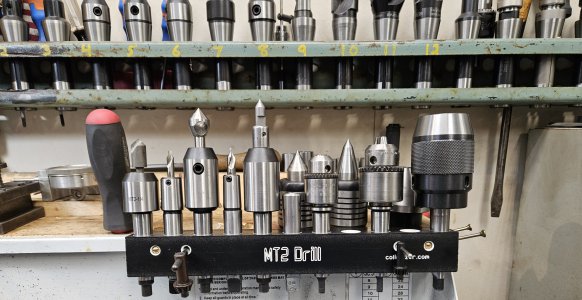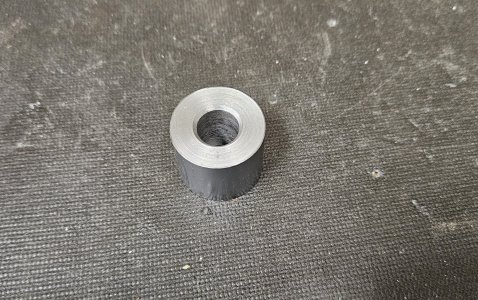I have a Precision Matthew's 1030V. I recently watched Stephen Gotteswinter discussing drilling with the toolpost.
I had recently set up a nice rack full of mt2 tools to quick change in my tailstock.

I decided I wanted to try tool post drilling and the pre-staged tools would be pretty handy for that. I bought a Shars MT2 qctp holder (250-105) to try out.
I dialed in the face of the holder with a top facing dti and dialed in the front opening and set zero on my cross slide.
I am stunned at how well it worked on mild steel and aluminum.
I didn't want to push it too hard in steel so I started with 1/4" and then step drilled to 3/8 and then 1/2". I used 0.0025" feed per revolution and 400 rpm. I'm positive I could have gone straight to 1/2".
Then I drilled 1/4" in aluminum and went straight to 3/4" mt 2 drill. I really could have gone to 0.005" feed. There is really no need push things because it's so fast and easy.
I broke a no 3 center drill on a chunk of mystery stainless. Way too much pressure needed to keep cutting. I'll stick with tailstock drilling for really tough materials.
I'm extremely pleased with the results so far. I'll get video tomorrow.
I had recently set up a nice rack full of mt2 tools to quick change in my tailstock.

I decided I wanted to try tool post drilling and the pre-staged tools would be pretty handy for that. I bought a Shars MT2 qctp holder (250-105) to try out.
I dialed in the face of the holder with a top facing dti and dialed in the front opening and set zero on my cross slide.
I am stunned at how well it worked on mild steel and aluminum.
I didn't want to push it too hard in steel so I started with 1/4" and then step drilled to 3/8 and then 1/2". I used 0.0025" feed per revolution and 400 rpm. I'm positive I could have gone straight to 1/2".
Then I drilled 1/4" in aluminum and went straight to 3/4" mt 2 drill. I really could have gone to 0.005" feed. There is really no need push things because it's so fast and easy.
I broke a no 3 center drill on a chunk of mystery stainless. Way too much pressure needed to keep cutting. I'll stick with tailstock drilling for really tough materials.
I'm extremely pleased with the results so far. I'll get video tomorrow.



